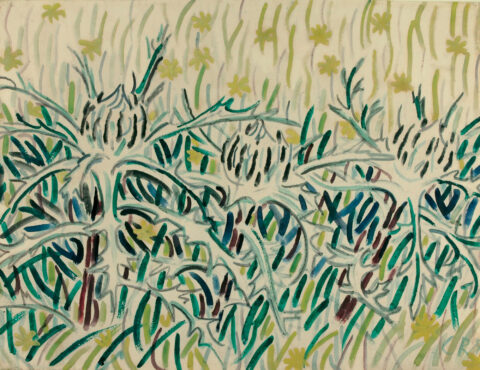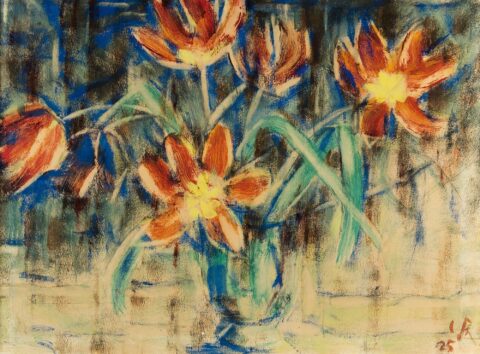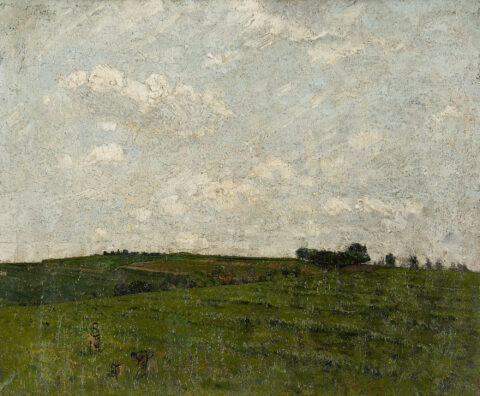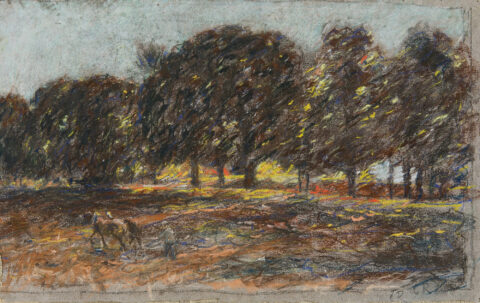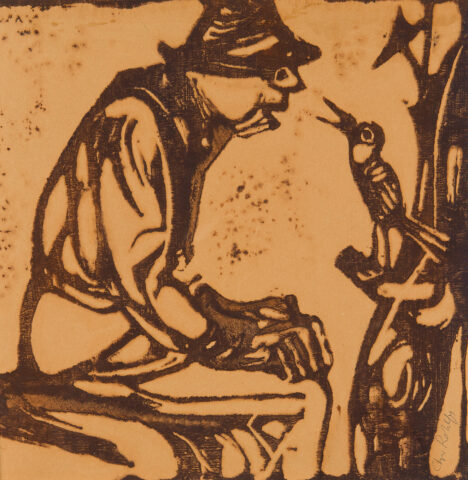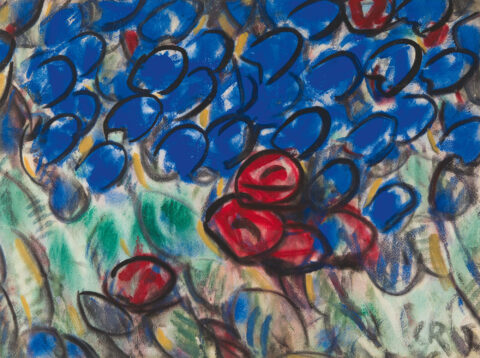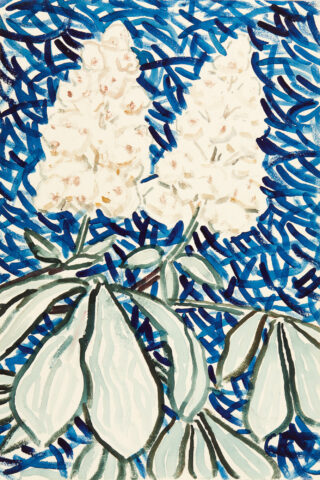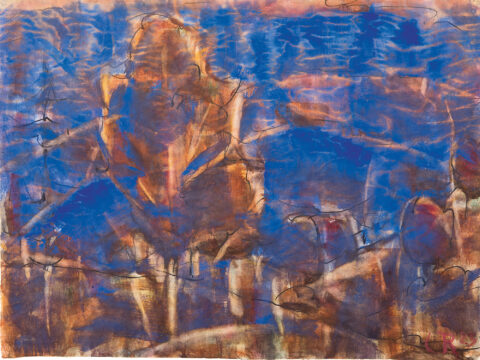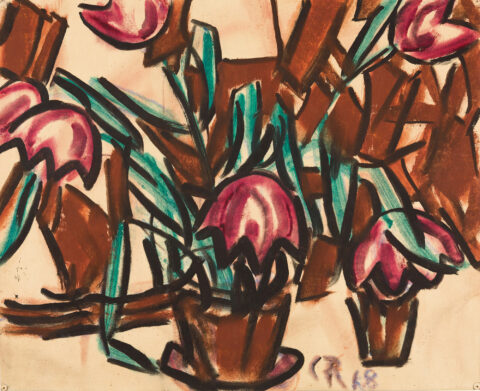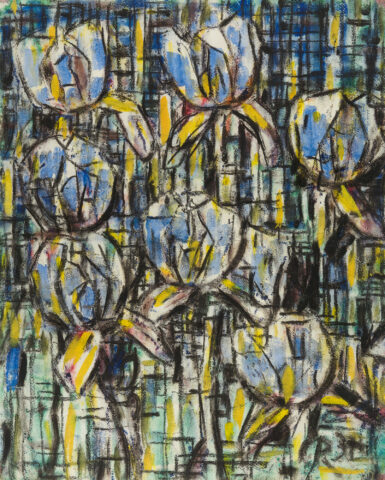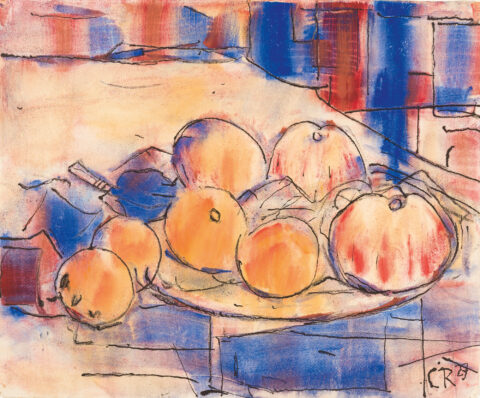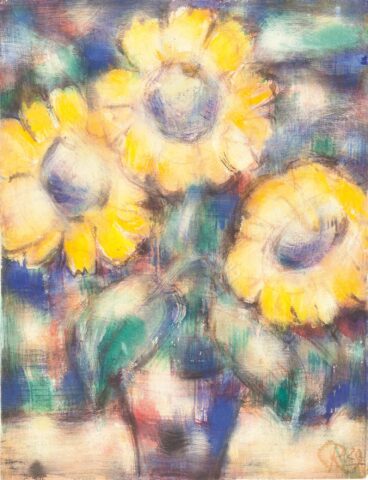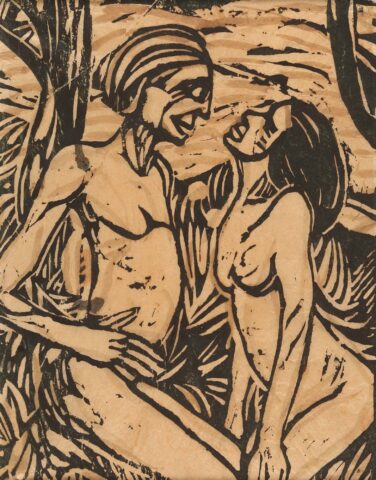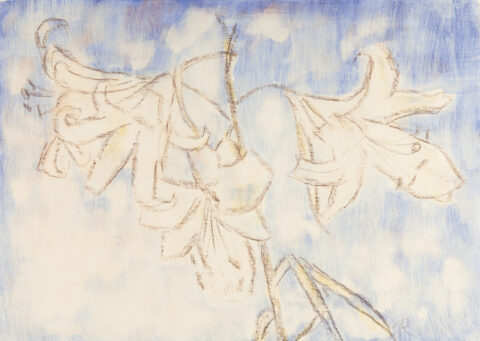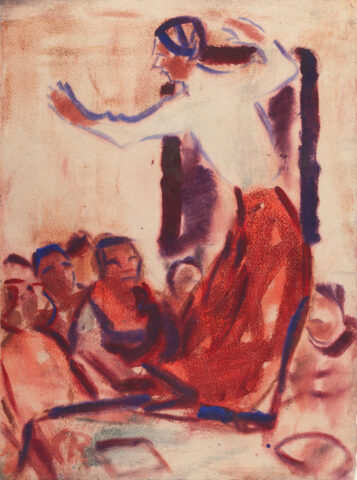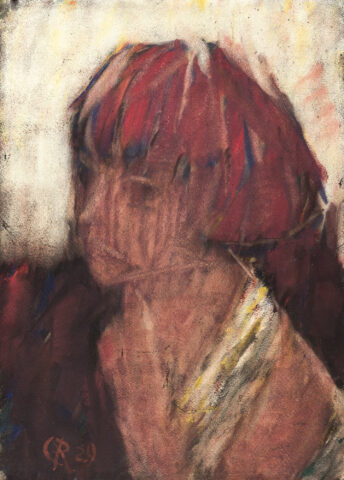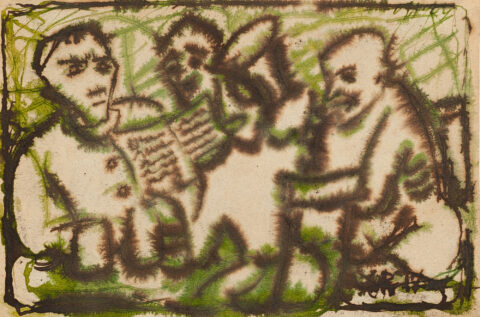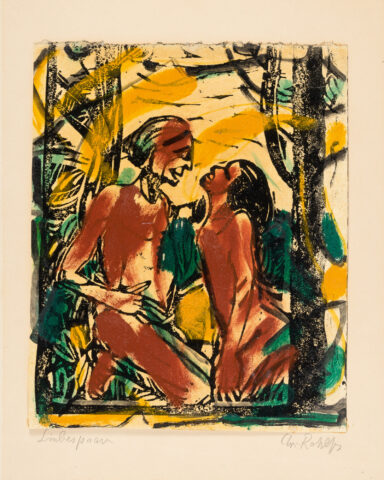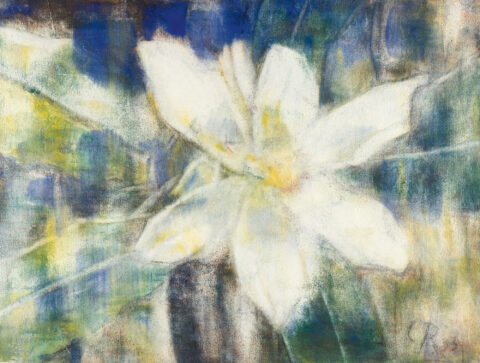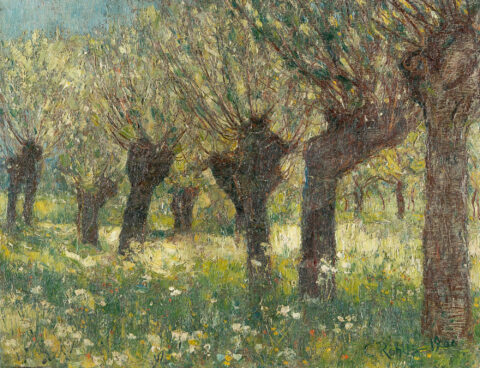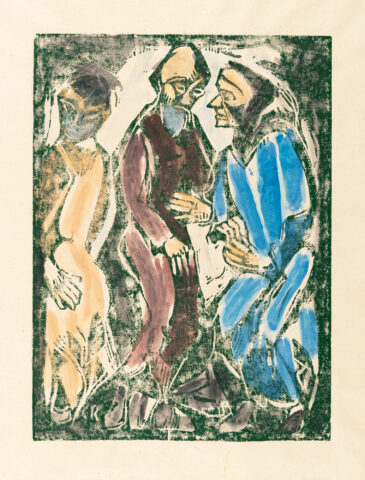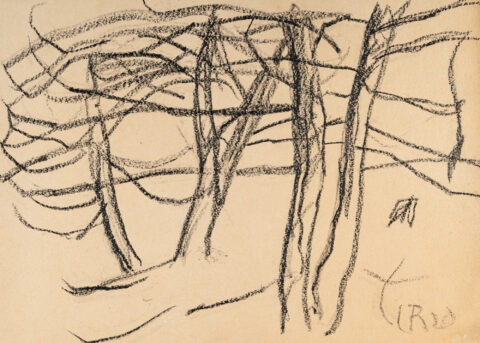Christian Rohlfs
Christian Rohlfs is one of the most important representatives of German Expressionism. Besides flower still lifes the landscape is the most popular subject. Rohlfs developed his very own style of water tempera on paper and, like his friend Emil Nolde, made special use of colour. In 1864 Rohlfs came to paint after a fall on the sickbed and in 1869 he was taught by Ludwig Pietsch in Berlin. On Pietsch’s recommendation he started at the Grand Ducal Academy in Weimar under Paul Thumann in 1870. In 1873 his leg was amputated and he studied under Ferdinand Schauß. In 1876 Rohlfs moved to the Weimar art school to study nude painting with Alexandre Struys. In 1881 he breaks up and moves into a freelance studio and works with Max Thedy. After Rohlfs was declared an independent artist in 1884, his painting style loosened up in the Impressionist direction from 1888. In 1900 Henry van de Velde brought him into contact with Karl Ernst Osthaus, who was busy founding the Folkwang Museum. After travelling with Karl Arp, Rohlfs moved from Osthaus to Hagen in 1901, where he moved into a studio in the museum. In 1903 he produced his first watercolours. In 1904 he met Edvard Munch in Weimar and gave up his studio. At the same time his friendship with Dr. Walter Kaesbach begins and he visits Soest for the first time. In 1905 Rohlfs spends part of his time in Soest and becomes friends with Emil Nolde. In 1907 Rohlfs becomes a member of the Special Association of West German Friends of Art and in 1908 of the German Work Federation. After 1908-10 Rohlfs lives in Polling near Munich, where he produces his first woodcuts. In 1911 Rohlfs becomes a member of the New secession Berlin and the Folkwang Federation in Hagen. Instead of oil painting he devotes himself more and more to tempera. In 1914 the outbreak of war shook Rohlfs so much that he was briefly unable to work. In 1919 he marries Helene Vogt. Several solo exhibitions are held on his 70th birthday. The 1920s are marked by travels with his wife and he creates large-scale water tempera works on paper, which take the place of paintings. In 1924, on his 75th birthday, he was made an honorary citizen of the city of Hagen and became a member of the Prussian Academy of Arts in Berlin. Further journeys follow, especially to Ascona, and his state of health demands stays at a health resort. In 1926 he produces his last graphic works. In 1929 several solo exhibitions are held to celebrate his 80th birthday and the city of Hagen founds the Christian-Rohlfs-Museum. In 1936 works are shown for the first time in the USA, at the Detroit Institute of Arts. In 1937 Rohlfs is considered a degenerate artist and is expelled from the Prussian Academy of Arts in Berlin. He is banned from exhibiting and more than 400 works are removed from German museums. In 1937 his last exhibition is held at the Gallery Ferdinand Möller in Cologne. Rohlfs returns to Hagen at the beginning of December and dies in his studio on 8 January 1938.



